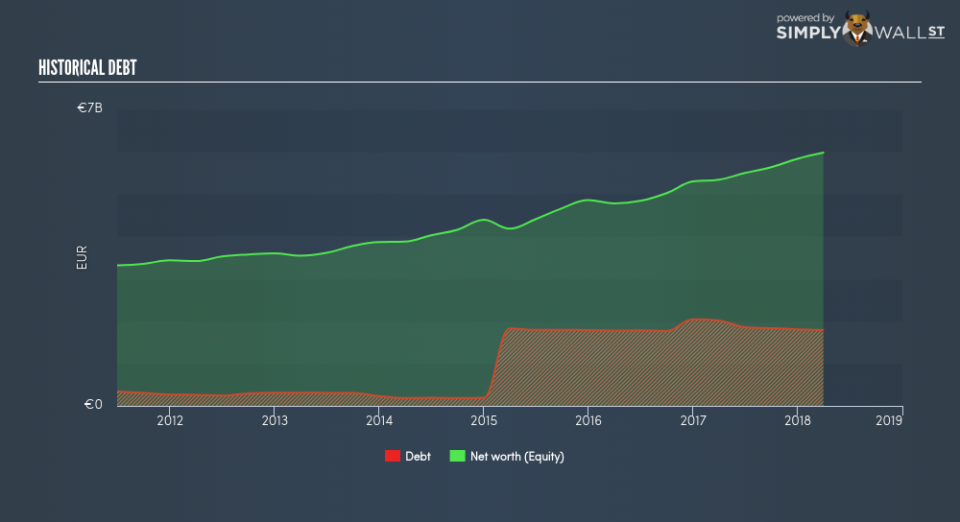What does Infineon Technologies AG’s (ETR:IFX) Balance Sheet Tell Us About Its Future?

Investors pursuing a solid, dependable stock investment can often be led to Infineon Technologies AG (ETR:IFX), a large-cap worth €28.39b. Doing business globally, large caps tend to have diversified revenue streams and attractive capital returns, making them desirable investments for risk-averse portfolios. But, its financial health remains the key to continued success. Let’s take a look at Infineon Technologies’s leverage and assess its financial strength to get an idea of their ability to fund strategic acquisitions and grow through cyclical pressures. Note that this commentary is very high-level and solely focused on financial health, so I suggest you dig deeper yourself into IFX here. Check out our latest analysis for Infineon Technologies
Does IFX produce enough cash relative to debt?
IFX’s debt level has been constant at around €1.83b over the previous year made up of current and long term debt. At this constant level of debt, the current cash and short-term investment levels stands at €2.45b , ready to deploy into the business. Moreover, IFX has generated cash from operations of €1.72b over the same time period, resulting in an operating cash to total debt ratio of 93.95%, indicating that IFX’s operating cash is sufficient to cover its debt. This ratio can also be a sign of operational efficiency as an alternative to return on assets. In IFX’s case, it is able to generate 0.94x cash from its debt capital.
Can IFX pay its short-term liabilities?
Looking at IFX’s most recent €2.10b liabilities, it seems that the business has been able to meet these obligations given the level of current assets of €4.87b, with a current ratio of 2.32x. For Semiconductor companies, this ratio is within a sensible range as there’s enough of a cash buffer without holding too capital in low return investments.
Does IFX face the risk of succumbing to its debt-load?
With a debt-to-equity ratio of 29.92%, IFX’s debt level may be seen as prudent. This range is considered safe as IFX is not taking on too much debt obligation, which can be restrictive and risky for equity-holders. We can test if IFX’s debt levels are sustainable by measuring interest payments against earnings of a company. Preferably, earnings before interest and tax (EBIT) should be at least three times as large as net interest. In IFX’s case, the ratio of 20.96x suggests that interest is comfortably covered. Large-cap investments like IFX are often believed to be a safe investment due to their ability to pump out ample earnings multiple times its interest payments.
Next Steps:
IFX has demonstrated its ability to generate sufficient levels of cash flow, while its debt hovers at an appropriate level. In addition to this, the company exhibits proper management of current assets and upcoming liabilities. This is only a rough assessment of financial health, and I’m sure IFX has company-specific issues impacting its capital structure decisions. I recommend you continue to research Infineon Technologies to get a more holistic view of the stock by looking at:
Future Outlook: What are well-informed industry analysts predicting for IFX’s future growth? Take a look at our free research report of analyst consensus for IFX’s outlook.
Valuation: What is IFX worth today? Is the stock undervalued, even when its growth outlook is factored into its intrinsic value? The intrinsic value infographic in our free research report helps visualize whether IFX is currently mispriced by the market.
Other High-Performing Stocks: Are there other stocks that provide better prospects with proven track records? Explore our free list of these great stocks here.
To help readers see pass the short term volatility of the financial market, we aim to bring you a long-term focused research analysis purely driven by fundamental data. Note that our analysis does not factor in the latest price sensitive company announcements.
The author is an independent contributor and at the time of publication had no position in the stocks mentioned.

